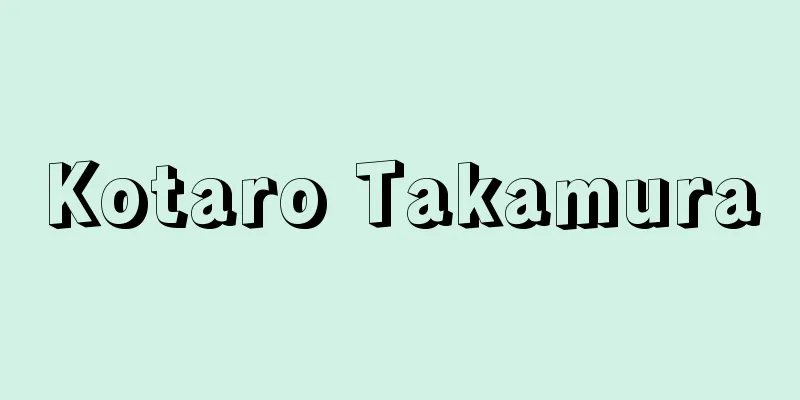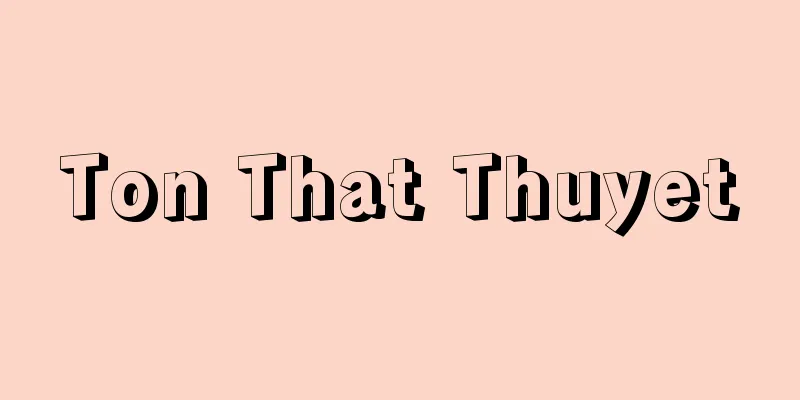Kotaro Takamura

|
Poet and sculptor. Born in Shitaya, Tokyo on March 13, 1883. His father was Takamura Koun, a professor of sculpture at the Tokyo School of Fine Arts (now Tokyo University of the Arts). His real name was Kotaro, and he later called himself Kotaro. He also used the pen name Takamura Saiu early on. He learned woodcarving techniques from his father as a child, and graduated from the sculpture department of the Tokyo School of Fine Arts in 1902 (Meiji 35). He then went on to study Western painting. While still a student, he joined Yosano Tekkan's Shinshisha in 1900, and discovered Rodin, awakening him to a new form of art that emphasized the dynamics of life. In 1906, he traveled to the United States to study sculpture. He moved to New York, then London and Paris before returning to Japan in 1909. During this time, Kotaro came into contact with the fundamental nature of humanity that underlies Western culture and art, and began to adopt this as his own position on beauty. However, this position was not easily accepted by the conventional Japanese art world, and he produced few sculptures other than the "Koun 60th Birthday Commemorative Bust" in 1911, instead joining the "Bread Society" to vent his frustrations. His frustrations were expressed in a defiant form in works such as the critique "Green Sun" and the poem "The Land of Netsuke." This decadence eventually converged towards the affirmation and praise of life with the discovery of the so-called "laws of nature" and the appearance of Naganuma Chieko, who painted the cover art for Seito. In 1912, he formed the Fuusan Society with Kishida Ryusei and Yorozu Tetsugoro, and exhibited oil paintings, but the group disbanded the following year in 1913. The collection of poems "Michijo" was self-published in October 1914 (Taisho 3), and it is striking how it describes the painful process of this self-establishment. He began living with Chieko at the end of the same year. While he continued to concentrate on sculpture, he also translated and published works such as "Words of Rodin" (1916), Whitman's "Selected Diaries" (1921), and Verhaeren's collection of poems "Bright Times" (1921). With the relaunch of "Morning Star" in November 1921, he resumed writing poetry with poems such as "Cathedral Smitten by the Rain," and then began a series of poems known as "Wild Beasts," which sharply explored social reality. These poems demonstrate the definite perfection of a powerful, colloquial free verse style. In the Showa era, Kotaro's life was divided between private and public, symbolized by his nursing of the mentally ill Chieko and his position as president of the Japanese Literature Patriotic Association's Poetry Division. On one side, he compiled "Chieko Excerpts" (1941), and on the other, he published a collection of war poems such as "On the Great Day" (1942). After the Second World War, he wrote the linked poem "An'gu Koden" in Yamaguchi, Ota Village, Iwate Prefecture (now Ota, Hanamaki City), where he was evacuated, as a reflection on this half of his life. The collection of poems containing this work, "Teikei" (1950), and the nude standing statue on the shores of Lake Towada, "Michinoku" (1952), were his final commemorations. In 1952 (Showa 27), he was recommended as a member of the Second Division (Literature Division) of the Japan Art Academy, but he declined the offer. He died on April 2, 1956. The Takamura Kotaro Memorial Museum is located in Ota, Hanamaki City. [Yasuhiko Ando January 19, 2017] He keenly pursued the conflict between the modern European modeling ideas he learned from Rodin and the traditional modeling methods he had been familiar with since childhood, and eventually came to fruition a full-scale sculpture theory based on the four elements of surface, mass, movement, and fleshiness, as seen in "The Theory of Plastic Art" (1942). Although he produced few works, he produced dense masterpieces such as "Hands," "Seated Nude," and "Portrait of Seiki Kuroda," and also opened up new horizons in woodcarvings such as "Catfish," "Peach," and "Cicada." [Tamon Miki January 19, 2017] "The Complete Works of Takamura Kotaro, 18 volumes in total (1957-1958, Chikuma Shobo)" ▽ "The Materials on Takamura Kotaro, edited by Kitagawa Taichi, complete set of six volumes (1967-1972, Bunjido Shoten)" ▽ "Research on Takamura Kotaro, edited by Kusano Shinpei (1959, Chikuma Shobo)" ▽ "Research on Takamura Kotaro, edited by Ito Nobuyoshi (1966, Shichosha)" [References] | | |Source: Shogakukan Encyclopedia Nipponica About Encyclopedia Nipponica Information | Legend |
|
詩人、彫刻家。明治16年3月13日東京・下谷(したや)に生まれる。父は東京美術学校(現、東京芸術大学)彫刻科教授高村光雲(こううん)。本名は光太郎(みつたろう)。のち自ら光太郎(こうたろう)と称した。初期の筆名に篁砕雨(たかむらさいう)を使ったこともある。幼少時父に木彫技法を学び、1902年(明治35)東京美術学校彫刻科を卒業。続いて西洋画科に進んだ。在学中の1900年に与謝野鉄幹(よさのてっかん)の新詩社に入り、またロダンを知って生命の躍動に力点を置く新しい芸術のありように目覚める。1906年、彫刻修業のために渡米。ニューヨーク、さらにロンドン、パリと移って1909年帰国した。この間、光太郎は西欧の文化・芸術の根底にある人間の根源性に触れ、それを自らの美の立場とするようになった。この立場は、けれども因襲的な日本美術界には容易に受け入れられず、1911年に『光雲還暦記念胸像』を制作したほか彫刻はほとんど発表せず、「パンの会」に入ってその鬱情(うつじょう)を発散した。評論「緑色の太陽」や、詩「根付(ねつけ)の国」などには、その鬱情が挑戦的な形をとってほとばしっている。こうしたデカダンスは、やがて、いわゆる「自然の理法」の発見や、『青鞜(せいとう)』の表紙絵を描いていた長沼智恵子(ちえこ)の出現によって、生の肯定・賛美に向かって収束されてゆく。1912年には岸田劉生(りゅうせい)、萬鉄五郎(よろずてつごろう)らとフュウザン会を結成し、油絵を発表したが、翌1913年解散。詩集『道程』が自費出版されたのは1914年(大正3)10月であるが、ここにはそうした自己定立の苦しい経緯が示されていて人を打つ。智恵子との生活が始まるのはこの年の暮れからである。 以後、彫刻に専念する一方、『ロダンの言葉』(1916)、ホイットマンの『自選日記』(1921)、ベルハーレンの詩集『明るい時』(1921)などの翻訳を手がけ出版した。1921年11月『明星(みょうじょう)』の復刊によって、「雨にうたるるカテドラル」などで詩作を再開、続いて社会現実を鋭くえぐった「猛獣篇(へん)」とよばれる一連の詩を書き始める。これらは力感あふれる口語自由詩体の確かな完成を示している。 昭和に入っての光太郎の生活は、精神を病んだ智恵子の看病と、日本文学報国会詩部会会長に象徴される私と公とに分断される。一方に『智恵子抄』(1941)が編まれ、一方に戦争詩集『大いなる日に』(1942)などが出版された。第二次世界大戦後、疎開先の岩手県太田村山口(現、花巻(はなまき)市太田)で、連詩「暗愚小伝」が書かれたのも、こうした半生を反省してのことであった。これを収めた詩集『典型』(1950)と、十和田(とわだ)湖畔の裸婦立像『みちのく』(1952)が最後の記念となった。1952年(昭和27)日本芸術院第二部(文学部門)会員に推挙されたが、これを辞退した。昭和31年4月2日没。花巻市太田には高村光太郎記念館がある。 [安藤靖彦 2017年1月19日] 彼はロダンに学んだヨーロッパの近代造形思考と、幼少時から身につけた伝統的造形手法との相克を鋭く追求し、『造型美論』(1942)にみられるような、面・量塊・動勢・肉づけを四因子とする、本格的な彫刻理論を結実させた。そして、寡作ながら『手』『裸婦坐像(ざぞう)』『黒田清輝(せいき)像』など密度のある佳作を生み、さらに『鯰(なまず)』『桃(もも)』『蝉(せみ)』などの木彫にも新生面を開いている。 [三木多聞 2017年1月19日] 『『高村光太郎全集』全18巻(1957~1958・筑摩書房)』▽『北川太一編『高村光太郎資料』全六集(1967~1972・文治堂書店)』▽『草野心平編『高村光太郎研究』(1959・筑摩書房)』▽『伊藤信吉編『高村光太郎研究』(1966・思潮社)』 [参照項目] | | |出典 小学館 日本大百科全書(ニッポニカ)日本大百科全書(ニッポニカ)について 情報 | 凡例 |
>>: Takamura Koun - Takamura Koun
Recommend
Miscellaneous songs - Zouka
Along with "Love Song" and "Elegy,...
Osaka College of Music
A private single-discipline university. Its predec...
Ardabīl (English spelling)
A regional capital of East Azerbaijan Province in ...
Motsugo (Japanese parrotfish) - Motsugo (English spelling) Pseudorasbora parva
A freshwater fish of the Cyprinidae family (illust...
Umemura Suizan
1839-1906 A printing engineer and copperplate eng...
Royal Pavillion
…The construction of summer palaces flourished in...
Vertical light distribution - Let's go to school
...On a horizontal plane passing through the ligh...
Volksvertretung
In modern states, a parliamentary body has the po...
ATA - Atelier Tay
An interface standard for connecting hard disks, e...
Organization of American States
An international organization that plays a centra...
Kumano Nada
On the southeast coast of the Kii Peninsula, from...
Tokugawa Ieyoshi
The 12th Shogun of the Edo Shogunate. The second ...
Dual Identity - 2014
This refers to a state of consciousness in which a...
English Mothers - Mothers of England
…Furthermore, home economics books themselves cha...
Dabir, M.
…Anis was a poet active during the reign of the I...








![Iinan [town] - Iinan](/upload/images/67cae449783e7.webp)
